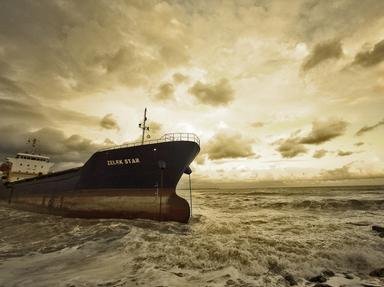Quiz Answer Key and Fun Facts
1. Discovered in June 2008, this warship created much excitement in the maritime archaeological community. She was known by what name?
2. Lost on Lake Erie, the wreck of this ferry has been the subject of many ghost stories that have since sprung up in Great Lakes lore. What is the name of this vessel?
3. This brand new freighter was wrecked off the Keewenaw Peninsula in 1910. Her bow was left unsalvaged, but the stern was saved and later grafted onto another ship. Do you know what this freighter's name was?
4. At the time of her launch in 1913, this freighter was the largest ship then launched from a Canadian port. That same year she would also become the largest ship lost during one of the deadliest storms to hit the lakes. Name the vessel.
5. On Armistice Day (November 11) 1940, Lake Michigan suffered a "big blow" of its own when a gale roared across the mid-western United States and the lake itself. Three freighters were sunk that day, two of which took their entire crews to the bottom with them. The third vessel however was the subject of a dramatic (and successful) rescue that happened within sight of land. That ship was called what?
6. The sinking of this ship in Lake Huron in 1865 not only killed many of her passengers but also proved to be deadly for the divers sent down to salvage her cargo. Her name was what?
7. On the night of September 17, 1949, the Toronto waterfront was a scene of horror, after this passenger liner burned at her dock.
8. At 638 feet long, which large limestone carrier was lost in a 1958 Lake Michigan gale?
9. In addition to storms, another killer of ships on the lakes can be fog. It was this phenomenon that resulted in the sinking of what freighter in May, 1965?
10. Twenty-six year old Dennis Hale of Ashtabula, Ohio, was the only survivor of which ship's sinking in 1966?
Source: Author
FearlessFreep
This quiz was reviewed by FunTrivia editor
stedman before going online.
Any errors found in FunTrivia content are routinely corrected through our feedback system.

